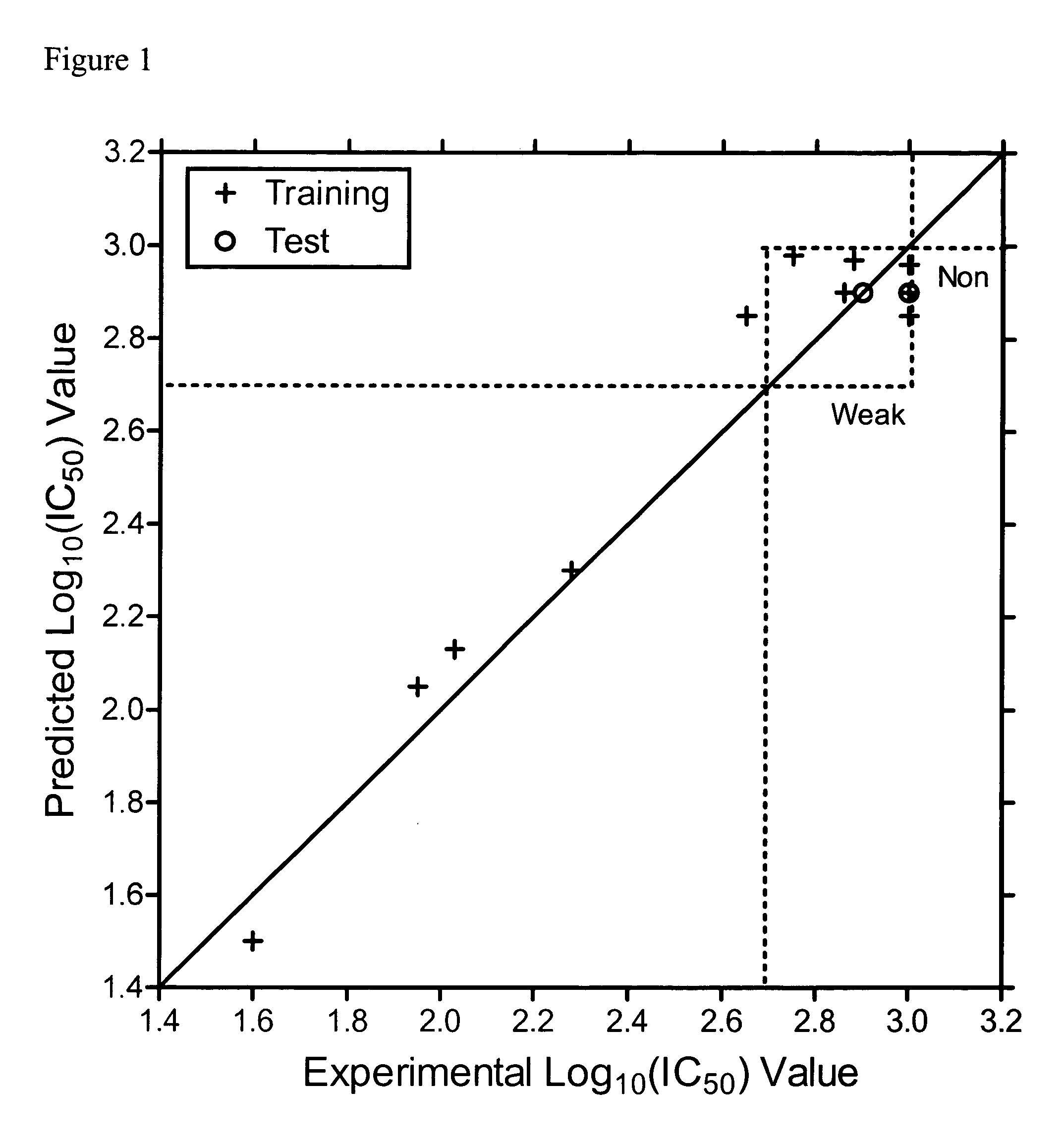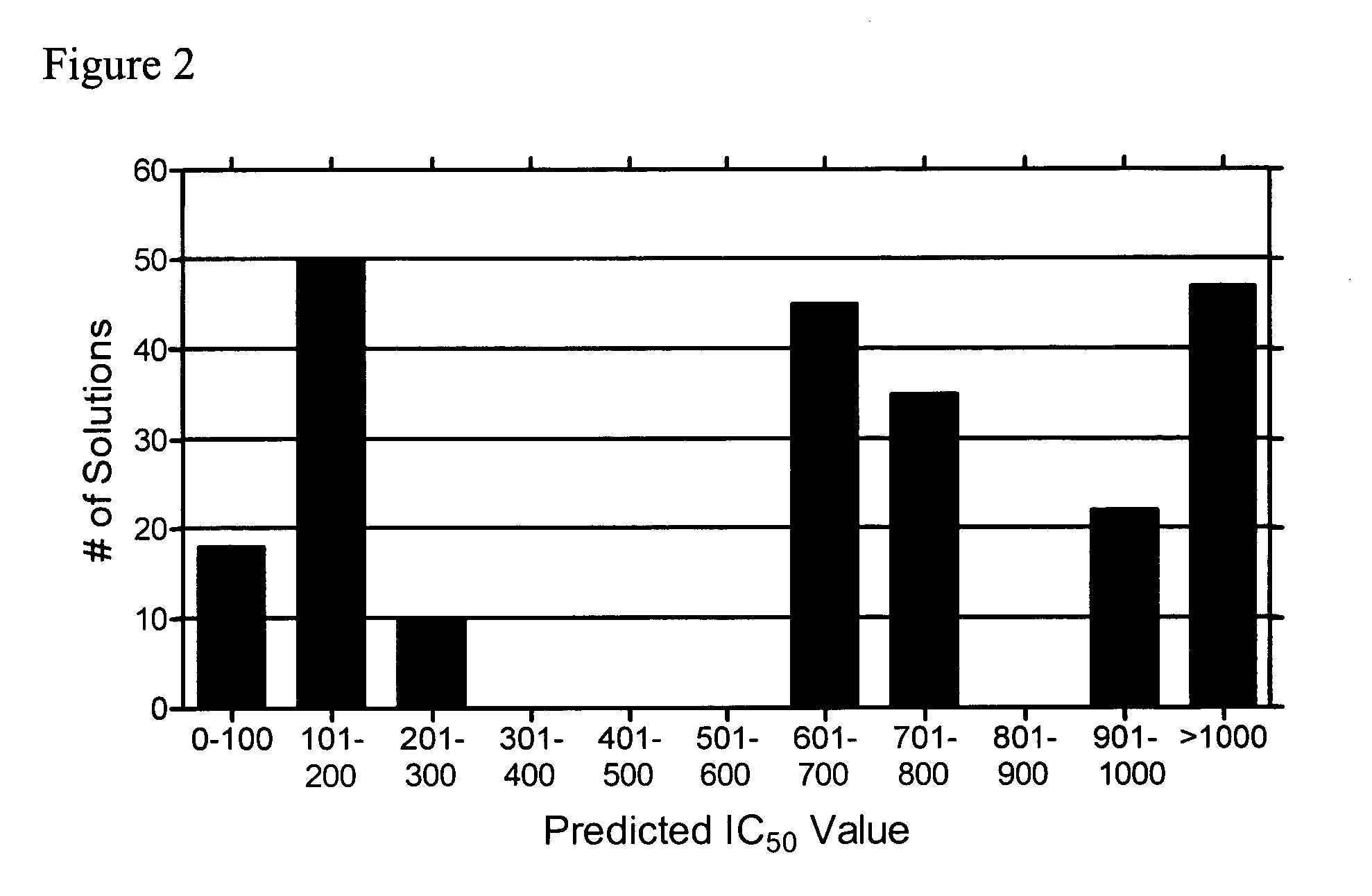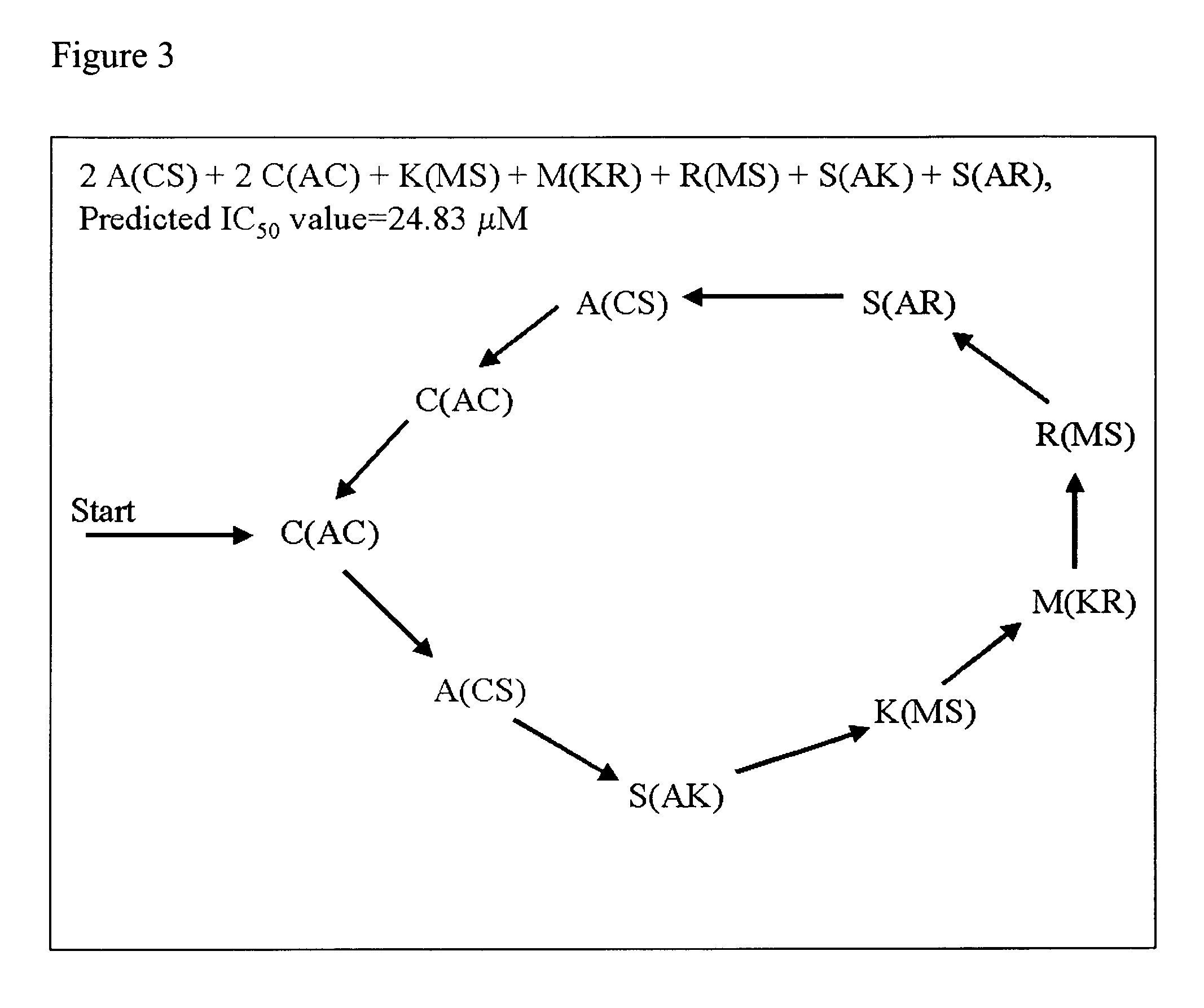Potent peptide inhibitors and methods of use
a peptide inhibitor and inhibitor technology, applied in the field of potent peptide inhibitors and methods of use, can solve the problems of limited clinical applicability of linear peptides, hampered anaphylactic reactions and secondary physiologic effects, and short serum half-lives of linear peptides, so as to reduce the likelihood of retinoic acid syndrome, reduce the likelihood of allograft rejection, and minimize toxic effects
- Summary
- Abstract
- Description
- Claims
- Application Information
AI Technical Summary
Benefits of technology
Problems solved by technology
Method used
Image
Examples
examples
Identification of Inhibitory Peptides According to the Present Invention Using QSAR
[0056] Following the teachings of Churchwell, et al., Jour. Mol. Graph. Model., 22, 263-273 (2004) and J. Chem. Inf. Comput. Sci., 43, 707-720 (2003) as described therein, a number of inhibitory peptides according to the present invention were identified.
[0057] The inverse-QSAR approach, was applied to a small set of inhibitory peptides directed against leukocyte trafficking and localization whose synthesis and testing in clinical trials is limited. A crucial event in leukocyte localization is binding to endothelium and subsequent migration from the blood into tissue. Recently, identification of cell surface adhesion molecules that mediate the adhesion of leukocytes to the endothelium, such as leukocyte functional antigen-1 (LFA-1) and its ligand intercellular adhesion molecule-1 (ICAM-1), have allowed investigation into leukocyte trafficking (E. C. Butcher, L. J. Picker, Lymphocyte homing and homeo...
PUM
| Property | Measurement | Unit |
|---|---|---|
| Fraction | aaaaa | aaaaa |
Abstract
Description
Claims
Application Information
 Login to View More
Login to View More - R&D
- Intellectual Property
- Life Sciences
- Materials
- Tech Scout
- Unparalleled Data Quality
- Higher Quality Content
- 60% Fewer Hallucinations
Browse by: Latest US Patents, China's latest patents, Technical Efficacy Thesaurus, Application Domain, Technology Topic, Popular Technical Reports.
© 2025 PatSnap. All rights reserved.Legal|Privacy policy|Modern Slavery Act Transparency Statement|Sitemap|About US| Contact US: help@patsnap.com



